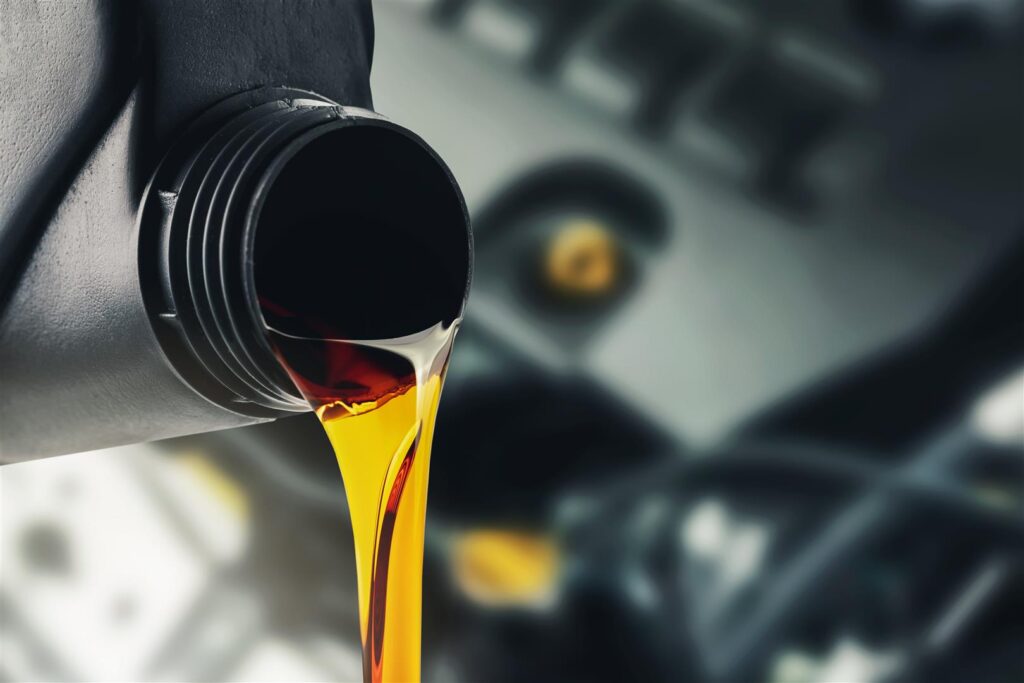Do You Check Oil While Car is Running? Here’s What You Need to Know
No, it is not recommended to check the oil while the car is running. It is best to wait for the engine to cool down before checking the oil level. Checking the oil level in your car is an essential part of regular maintenance to ensure the engine runs smoothly and efficiently. However, it is important to know the correct procedure for checking the oil. One common question that arises is whether it is okay to check the oil while the car is running. We will provide a clear and concise answer to this question. We will also explain the reasons behind the recommended method of checking the oil and the potential risks associated with checking the oil while the car is running. By following the proper guidelines for checking the oil, you can maintain the longevity and performance of your vehicle. Why Checking Oil Level Is Important It is not recommended to check the oil level while the car is running as it may result in inaccurate readings due to splashing inside the crankcase. Wait until the engine has cooled down to check the oil level accurately without the risk of burning yourself. Why Checking Oil Level is Important Importance Of Maintaining Proper Oil Level Regularly checking and maintaining the proper oil level in your car is crucial for the reliable operation and longevity of your vehicle. The oil in your car’s engine performs multiple essential functions, including lubricating and cooling the engine components. How Oil Lubricates And Cools The Engine The engine in your car consists of numerous moving parts that work together to produce power. These parts create friction and heat during operation, which the oil helps to mitigate. The oil acts as a lubricant, reducing the friction between these components, thus preventing excess wear and tear. Additionally, the oil absorbs the heat generated by the engine, preventing it from overheating. Potential Risks Of Low Oil Levels Allowing your engine’s oil level to drop too low can have severe consequences for your car’s performance and durability. When the oil level is low, there is not enough lubrication to properly protect the engine’s moving parts. This can lead to increased friction, excessive heat buildup, and accelerated wear, resulting in potential engine damage or even complete engine failure. A low oil level also compromises the engine’s ability to cool itself efficiently, putting it at risk of overheating. Overheating can cause tremendous damage to the engine, leading to costly repairs or the need for a full engine replacement. Furthermore, low oil levels can contribute to decreased fuel efficiency, as the engine has to work harder to compensate for the lack of lubrication and cooling. This can result in increased fuel consumption and a higher cost of operation. In conclusion, regularly checking your vehicle’s oil level is essential to maintaining the health and longevity of your car’s engine. It ensures proper lubrication and cooling, reduces the risk of engine damage, and promotes optimal fuel efficiency. Make it a habit to check your oil level according to the manufacturer’s recommendations and top it up if necessary. When To Check Oil One important aspect of car maintenance is regularly checking the oil level. This not only ensures the smooth running of your engine but also helps detect any potential issues early on. But when is the best time to check your car’s oil? In this section, we will explore the ideal temperature to check oil, waiting for the engine to cool down, and recommendations from manufacturers. Understanding The Ideal Temperature To Check Oil Checking the oil level at the right temperature is crucial to obtain accurate readings. It is commonly recommended to check the oil level when the engine is warm, but not hot. This is because the oil needs to be at its normal operating temperature to provide a true measurement. When the engine is warm, the oil becomes less viscous, allowing it to flow easily and settle in the oil pan. This ensures an accurate reading on the dipstick. However, it is essential to avoid checking the oil immediately after turning off the engine, as the oil may take a few minutes to fully settle. Waiting For The Engine To Cool Down While checking the oil with a warm engine is ideal, it is important to wait for the engine to cool down before popping the hood. This helps avoid potential burn injuries from touching hot engine components. Allowing the engine to cool down for at least 10 to 15 minutes ensures a safe environment for checking the oil level. During this cooldown period, the oil temperature drops to a manageable level, reducing the risk of accidental burns. Recommendations From Manufacturers Manufacturers often provide specific instructions on when to check the oil in their vehicle models. It is always advisable to refer to your car’s user manual for the manufacturer’s recommendations. While many manufacturers now design their dipsticks to read accurately even when the engine is warm, it is still a good practice to follow the guidelines provided. The manual will outline any specific instructions or precautions to follow while checking the oil level, ensuring you obtain the most accurate measurement. In conclusion, it is best to check the oil level when the engine is warm, but not hot, and after waiting for the engine to cool down. Following the manufacturer’s recommendations will ensure a proper oil check and help maintain the health of your car’s engine. How To Check Oil Level Checking the oil level of your car is an essential maintenance task that should be performed regularly to keep your engine running smoothly. Knowing how to check your oil level is beneficial in detecting potential issues early and preventing engine damage. In this article, we will guide you through the step-by-step process of checking your oil level, highlight the significance of locating the dipstick, and provide insights into common mistakes to avoid. Locating The Dipstick And Its Significance The dipstick is a small rod found in your car’s
Do You Check Oil While Car is Running? Here’s What You Need to Know Read More »






